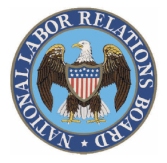Employment Law Report
New NLRB Election Statistics Reveal Union Weakness
 It has been one year since the National Labor Relations Board’s so-called “ambush” or “quickie” election rule went into effect. According to the Board, the rule was “designed to remove unnecessary barriers to the fair and expeditious resolution of representation cases” and “streamline” the process. In simpler terms, it was intended to speed up the process, something which organized labor and its supporters wanted so that employers would have less time to campaign before the election or, in the jaundiced view of organized labor, less time to intimidate voters. Organized labor contended that the old process favored employers and was unfair, and that the new rule was needed to “level the playing field.”
It has been one year since the National Labor Relations Board’s so-called “ambush” or “quickie” election rule went into effect. According to the Board, the rule was “designed to remove unnecessary barriers to the fair and expeditious resolution of representation cases” and “streamline” the process. In simpler terms, it was intended to speed up the process, something which organized labor and its supporters wanted so that employers would have less time to campaign before the election or, in the jaundiced view of organized labor, less time to intimidate voters. Organized labor contended that the old process favored employers and was unfair, and that the new rule was needed to “level the playing field.”
Last week, the NLRB released data about the effects of the new rule. As expected, the process is much faster. In cases in which unions filed the election petition, the median number of days between the date of the filing of the election petition and the date of the election fell from 38 days in the preceding year (April 2014 to April 2015) to 24 days in the past year (April 2015 to April 2016). This is a 37% reduction. In cases in which the unions and employers entered into an election agreement on issues such as the scope of the voting unit, voter eligibility, date, time and place of the election, etc. (92% of all cases in both years), the reduction was almost identical, from 38 days to 23 days. However, there was an even larger time reduction in cases in which employers and unions did not enter into an election agreement but instead went to a pre-election hearing to present evidence and arguments and then obtain a “Decision and Direction of Election” from the NLRB Regional Director, who decided these issues. In these so-called “directed” elections—which typically are ones in which employers raise important or novel issues, and the unions will not agree with the employers’ position—the median number of days fell from 64 to 34, a 46% reduction.
The good news for employers is that the dramatically increased speed of the process has not achieved organized labor’s desired results in election filings or outcomes. According to the Board, the number of election petitions filed by unions during the two year period was almost identical each year—2,141 petitions before the new rule compared to 2,144 petitions after—and so were the unions’ chances of winning: 71% before and 70% after.
One would have thought that unions would step up their organizing activity in order to take advantage of the new rule, but that hasn’t happened. So it appears that it was not the Board’s old election process that was impeding unions in organizing employees. If not, what else might it be? Could it be that more and more employees are not interested in being represented? This conclusion is supported by Board election statistics that show a dramatic decline in the number of representation elections conducted nationally during the last 15 years: 4,145 in 2001 compared to just 1,490 in 2015. Furthermore, the data indicates that the new rule was not needed to level the playing field. If it had been needed, one would have expected to see union win rates increase in the last year, not decrease.
Another significant piece of information in the report is the decline in the number of unfair labor practice charges filed by unions and employees that “block” an election petition. So-called “blocking charges” delay the election until after the charges have been investigated by the Board’s regional office (a process that normally takes 30-45 days) and, if found to have merit, would have been remedied. Even when charges have been settled without a time consuming trial, the election will be delayed for at least 60 days after the settlement agreement is approved. The number of blocking charges filed fell from 194 to 107, a decline of 49%.
What explains this dramatic decline in blocking charges? Are employers suddenly behaving better in the eyes of unions? Probably not. A more likely explanation is that unions made a tactical decision not to delay elections by blocking them and thereby try to take full advantage of the new rule to see if quicker elections would favor them. That didn’t happen, at least not so far.
Finally, the virtually unchanged union election win rate in the last year, combined with the dramatic decline in the number of blocking charges filed in the last year, reveals one more significant fact: election outcomes were never (or at least not over the past two years) affected by alleged unfair labor practices by employers.
